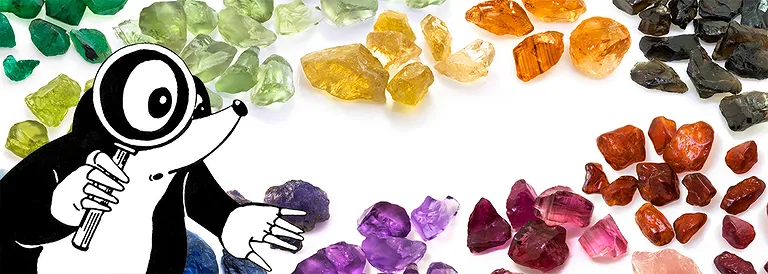
No stones?!
Amberite? Green obsidian? Orgonite? Almost daily, these terms are searched for in our web store, but not found. What it has to do with these and other "stones", we have summarized briefly and clearly for you.
Amberite / reconstructed Amber
The name suggests that amberite is amber. In fact, it is an imitation amber made with gold mica, which must also be referred to as such in the trade. Amber is imitated in many different imitated in many ways, mostly on the basis of various synthetic resins. These imitations have been increasingly perfected over time. Frequently, powdered grinding waste or small fragments of genuine Amber are also fused together. These products may be sold under the name "Genuine Amber", because the basis is real Amber(dust). More correct here are the terms "reconstructed Amber" or "Pressed Amber". Until 2006, the law allowed only natural amber could be called Amber. This law was repealed because the protection was guaranteed by other legislation, especially by the law against unfair competition. Buying amber is a matter of confidence and it is recommended to purchase Amber only from trusted dealers.
The baby necklaces, amber stringed beads and all other amber items in our assortment have been made from natural amber; the only exception are the bead earrings. These are marked with the addition "rek." for rekontruiert/reconstucted.
Andara crystals
In English-speaking countries, "Crystal" refers to both natural crystals and artificial crystal glass, which unfortunately often leads to confusion. "Andara crystals" are not naturally formed Glass from different sites, as some dealers claim, but colored Glass from artificial production, which has been confirmed by x-rayographic examinations in the laboratory. These glass products are also known as "synthetic obsidian", "obsidian glass", "red obsidian", "blue obsidian", etc., but have nothing to do with obsidian. According to the dealers, these glass objects are programmed with high vibrations and are supposed to support meditation and serve the well-being.
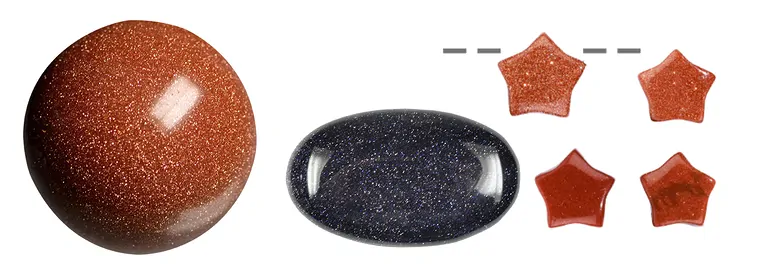
Sandstone
Even today, the Venetian glassmaking Miotto family is known for discovering, around 1626, the secret of how to make sparkling, colored jewelry glass from initially colorless glass by adding metal compounds, which could be cut and engraved engraved. The exact production process was passed down in the Miotto family from father to eldest son until it was forgotten due to the political turmoil in Venice at the end of the 18th century. In the second half of the 19th cent. the manufacturing process for gold flux was rediscovered by the German chemist Max von Pettenkofer. Soon after, glassworks in Bavaria and Bohemia began producing sparkling sand stone. Until today sand stone is widely used widespread use in jewelry and handicrafts.
The best known variety of sand stone is brown sand stone, the color of which comes from tiny copper crystals formed in the molten glass during the special manufacturing process. The production of sand stone is complicated and time-consuming. For brown sand stone, the glass mass is first melted from silica sand and other silicate raw materials as well as copper oxide and other metal oxides, then the metallic copper is produced by chemical reduction in the melt. Under exclusion of air and through very slow cooling, fine copper crystals can form in the melt, which later trigger the glitter. Depending on the type of metal salts added, sand stone has different colors: copper colors brown-red, chrome colors green and cobalt dark purple.
In addition to the term "sand stone" is also known as "aventurine glass". This is derived from the Italian term "per avventura" - random - which refers to the distribution of crystals, which can not be determined exactly. Perhaps also played the translation "adventure, venture" for "avventura" played a role, after all, the production was not without surprises. Later, the term aventurine and aventurizing also found its way into the description of natural stones which, due to the finest inclusions, show a glitter effect, such as the aventurine quartz. The fascination of this noble artificial glass has remained to this day.
Since the material is very popular due to its glitter and sparkle, we offer sand stone as hearts, stringed beads, tumbled stone, drilled focal components and in other shapes. The items are all marked "synt. glass".
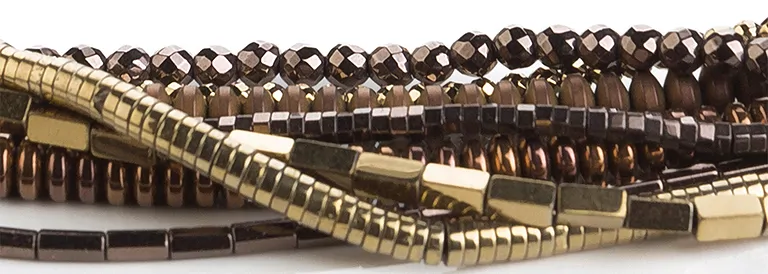
Hematine
Hematine is a product artificially made from iron oxide or from grinding residues of Hematite. It must not be confused with the naturally formed Hematite! The material is characterized by a metallic luster, which is very similar to Hematite and a neutral, homogeneous color. In jewelry making, Hematite is used mainly in the form of small beads as a substitute for Hematite beads. Hematite beads are popular as intermediate beads in stone jewelry.Gladly these are These are also still provided with a colored coating in brown, green, silver, gold or other colors.
Since hematin is very popular in jewelry making due to its low price, we also offer hematin stringed beads in our wholesale assortment. These items are all designated as "hematine".
Lava (multicoloured)
Naturally occurring lava is dark gray-black or dark brown-black. For some years, lava strands in bright variegated colors are also offered. This is mostly colored lava or other pröse stone varieties, partly is the material is also foamed concrete. Due to the intense color, colored lava is very popular for making colorful necklaces or bracelets or for jewelry intermediates.
Obsidian (green)
The product on sale under the name "Green Obsidian" or "St. Helens Obsidian" is said to originate from the eruption of the St. Helens volcano in the USA. However, no lava flowed out at all during this eruption. Also the assertion The manufacturer's claim that the Glass is made by melting ash from different parts of the volcano is also untrue. Ash from Mount St. Helens melted in the laboratory for testing purposes always resulted in brown-black Glass. "Green Obsidian" is nothing more than green colored Glass, which has no volcanic content.
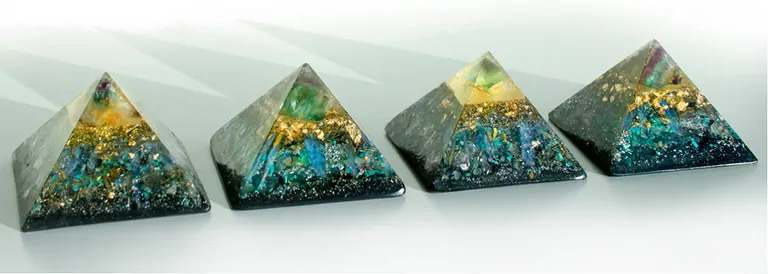
Orgonite
Through his experiments in the 1930s, German scientist Wilhelm Reich discovered an energy he called "orgone." It is a cosmic life energy that has a similar concept to the Asian "Chi" and the Indian "Prana." An orgonite is an object, usually in the form of a pyramid, made of various organic and inorganic layers such as fiberglass, steel wool, and metal shavings that are cast in synthetic resin. In the center there is is a Rock Crystal or other quartz to intensify the energy. The orgonite is meant to absorb, harmonize and amplify the life energy vibrating freely in the room. This is supposed to have a positive and strengthening effect on people and animals. have. Orgonites are available in different colors and shapes, mainly as pyramids or cones.
Pranalite
Pranalite, similar to orgonite, consists of several Findings such as synthetic resin, oils, metals, amber powder and quartz crystals. It is manufactured in different geometric shapes such as pyramids and domes, depending on its application in Living, sleeping or working spaces. Pranalites are said to act like energy collection points. Positive energies are to be passed on directly to the users and negative energies are to be cleansed, the energy flow is to be strengthened and steered in the right direction direction. The product is described as a source of energy, which is to dissolve blockages, remove interference fields and create a constant positive energy field that radiates evenly in all directions.
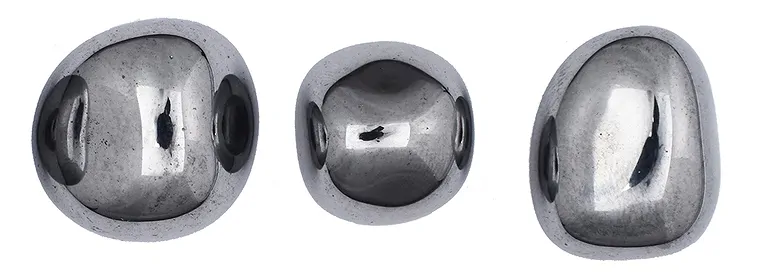
Silicon
Silicon (Si) is a component of many minerals (e.g. Rock Crystal SiO2). Pure silicon can be extracted from quartz sand or quartz gravel at temperatures around 2000° and then further processed. As a component of semiconductors, computer chips and solar cells, silicon is of great importance to industry. The name silicon comes from "silicia" (lat. for silica), in Asia products made of silicon are also sold under the names teraherz, teraherz, terahertz and terrahertz.
In analytical stone healing, silicon is important to strengthen the themes of stability, awareness and presence of mind. The mineral silicon promotes the inner, personal well-being and thus makes more independent of external circumstances; Determination and openness to inspiration are supported. Therefore, we have silicon beads, necklace strands, bracelets and tumbled stones in our wholesale assortment.
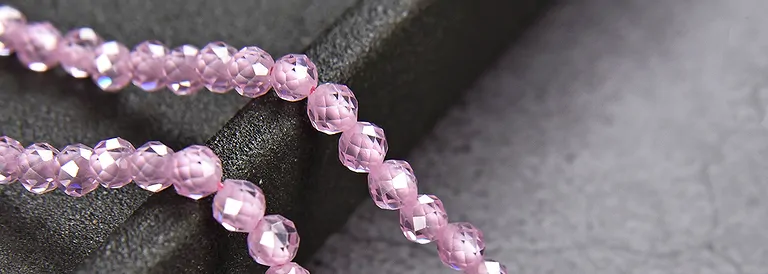
Zirconia
(Cubic) Zirconia is a synthetic gemstone that is a cost-effective alternative for natural Diamonds. It is characterized by a wide color spectrum and intense vivid light reflections. In the past, Cubic Zirconia was primarily used as a imitation diamonds, it has now achieved its position as a jewelry stone in its own right. Cubic Zirconia can be produced in almost any color; in each case by adding other elements. For example, iron colors it yellow, vanadium or chrome green and titanium gold-brown. Cubic Zirconia is considered the best diamond imitation in the world, which can hardly be distinguished from real diamonds with the naked eye, even by gemologists. Although the brilliance of Cubic Zirconia is is not quite as high as that of diamond, the stone has more "fire", i.e. the color spectrum of light reflections is greater than that of diamond.